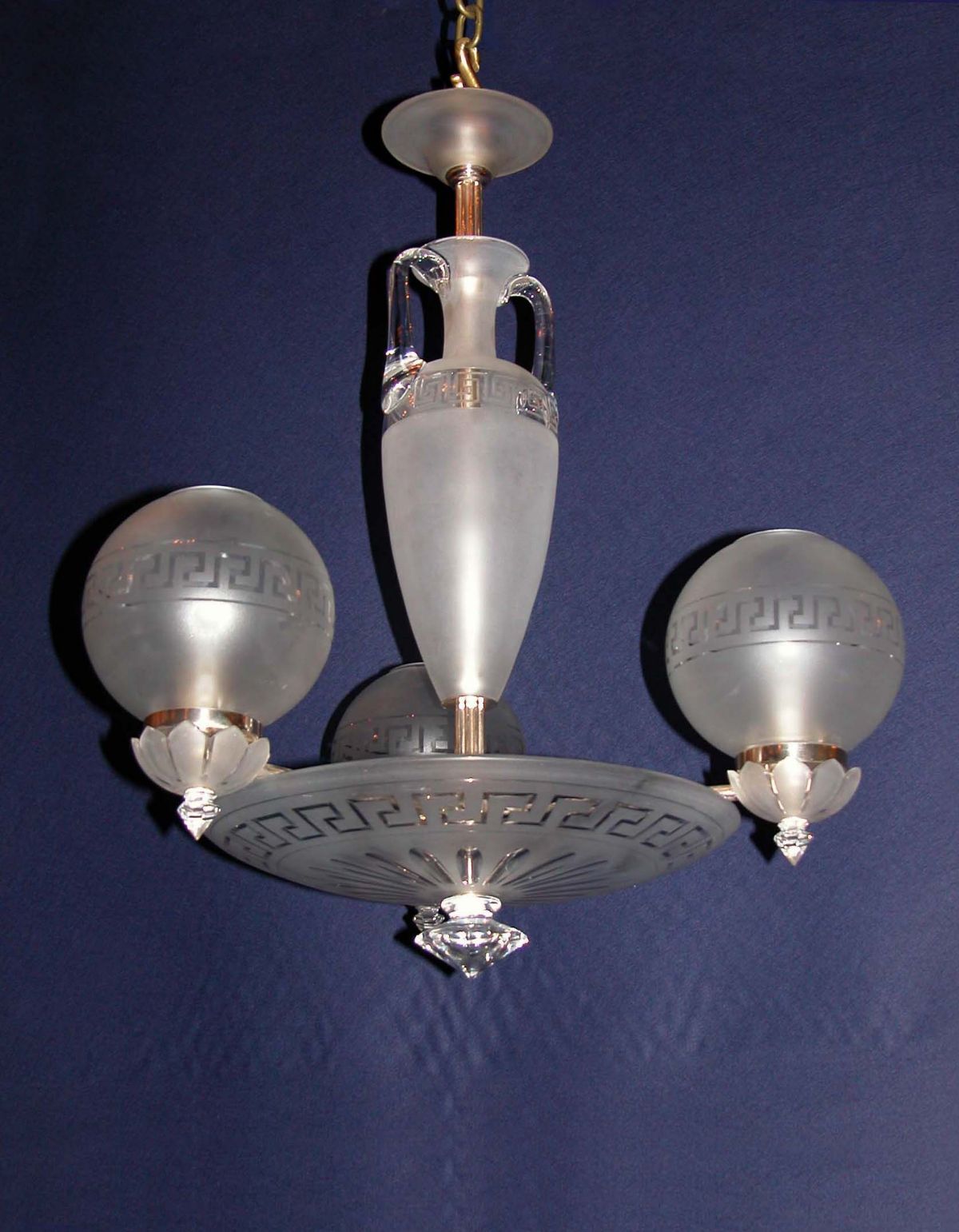Frosted and cut glass ‘Grecian Urn’ Gasolier by Osler
test
Frosted and cut glass ‘Grecian Urn’ Gasolier by Osler
2161
Victorian frosted glass three light ‘Grecian Urn’ Gasolier by Osler:
with Grecian urn above a three-way dish; engraved with classic key-pattern design. Marked Osler of Birmingham. Circa 1880, adapted for electricity, restored and supplied with later frosted glass globes.
| Height: | 24" | - | 61.0cm |
| Width: | 23" | - | 58.0cm |
Glossary Words
Osler & Co. (F & C)
Founded in Birmingham, England, in 1807, F & C Osler produced some of the most magnificent and imaginative items ever to come from a glass manufacturer. Thomas Osler, his sons, Follett and Clarkson, and after 1831, his nephew Abraham, were known for their exquisitely cut glass, often combined with fine gilded-metal mounts and framework, produced by their own craftsmen. From about 1840, they had established good contacts with the Middle East and had a gallery in Calcutta, India. Osler made an extravagant cut glass fountain for the centre of The Great Exhibition in 1851. They continued making chandeliers of the highest quality until well into the 20th century. In 1924, they took over the well-known lighting manufacturer Faraday Ltd. and went on producing light fittings until the 1970s.
gasolier
Light-fitting made for gas. Gas was used in street lighting and most large town houses by the mid-19th century. Expensive fittings were made to appeal to weathier consumers and some chandelier makers like Osler produced cut-glass Gasoliers. Chandeliers also continued to be used with candles and oil, as when gas was very impure it could smell unpleasant and be dangerous. Some chandeliers were adapted into gasoliers.
Victorian
The Victorian era corresponds with the reign of Queen Victoria in England from 1839 to 1901.


